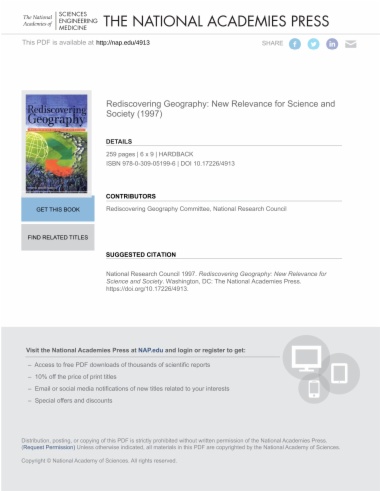

As political, economic, and environmental issues increasingly spread across the globe, the science of geography is being rediscovered by scientists, policymakers, and educators alike. Geography has been made a core subject in U.S. schools, and scientists from a variety of disciplines are using analytical tools originally developed by geographers.
Rediscovering Geography presents a broad overview of geography's renewed importance in a changing world. Through discussions and highlighted case studies, this book illustrates geography's impact on international trade, environmental change, population growth, information infrastructure, the condition of cities, the spread of AIDS, and much more.
The committee examines some of the more significant tools for data collection, storage, analysis, and display, with examples of major contributions made by geographers.
Rediscovering Geography provides a blueprint for the future of the discipline, recommending how to strengthen its intellectual and institutional foundation and meet the demand for geographic expertise among professionals and the public.